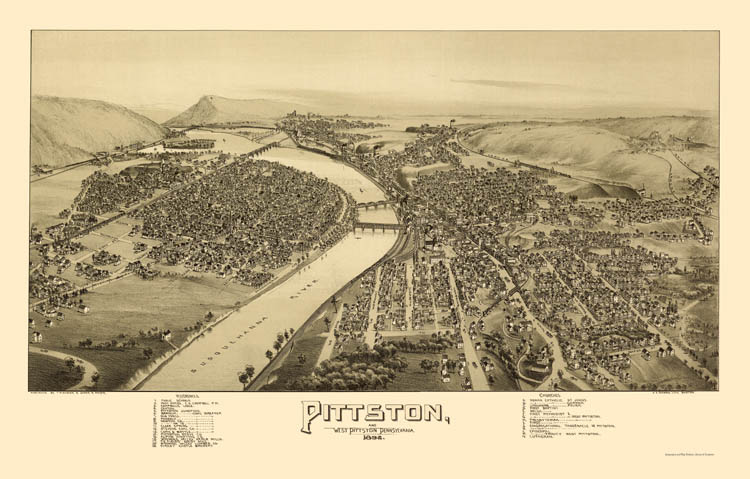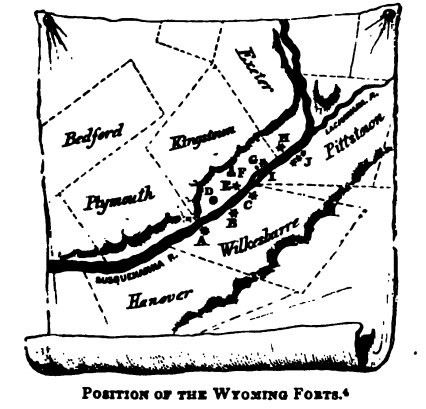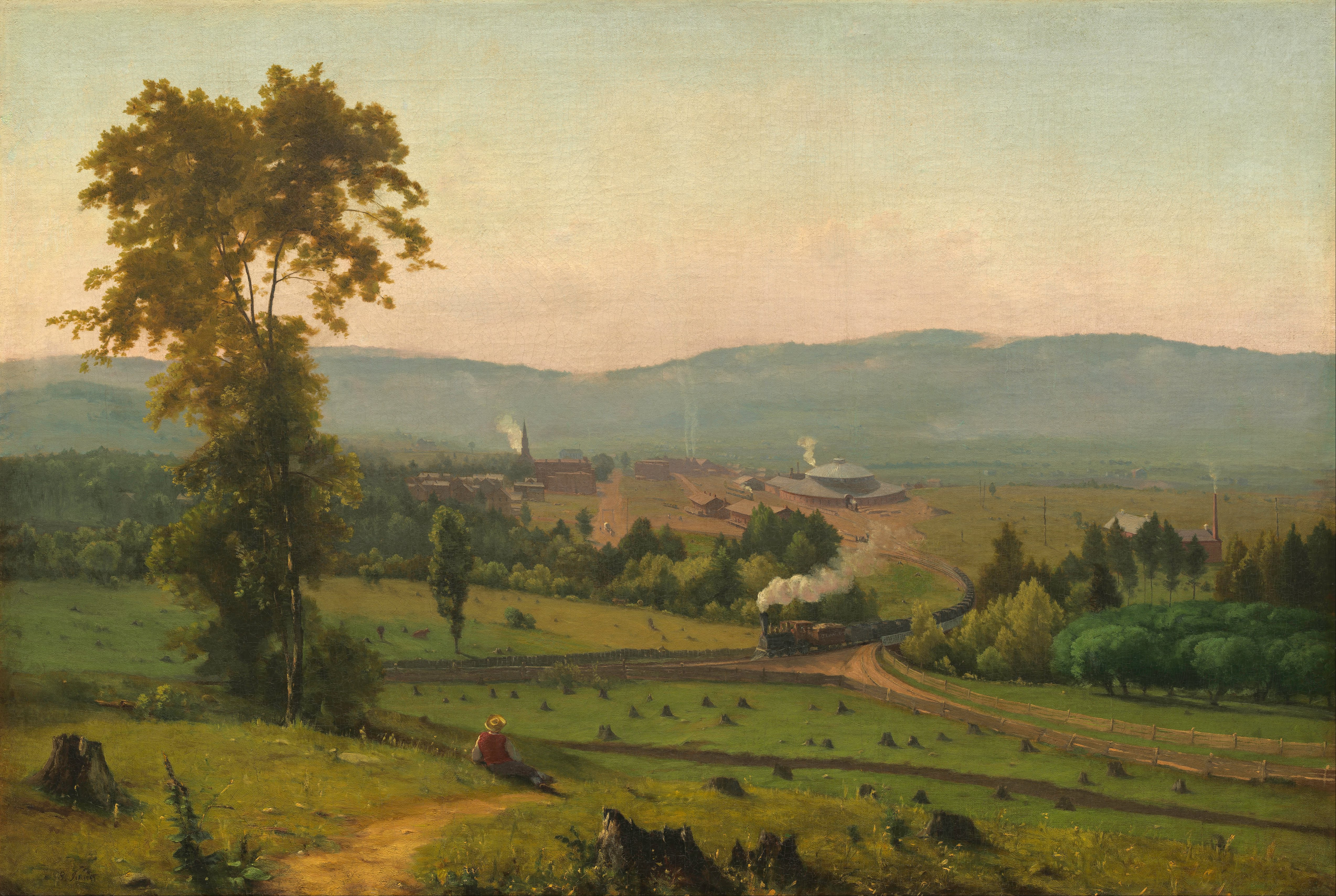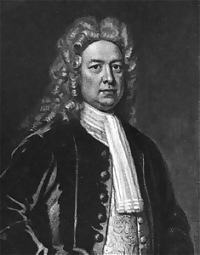|
Pittston
Pittston is a city in Luzerne County, Pennsylvania, United States. The city lies in the Wyoming Valley on the east side of the Susquehanna River and on the south side of the Lackawanna River. It is approximately midway between Wilkes-Barre, Pennsylvania, Wilkes-Barre and Scranton, Pennsylvania, Scranton. Pittston is north of Allentown, Pennsylvania, Allentown and northwest of New York City. The population was 7,591 as of the 2020 United States census, 2020 census, making it Luzerne County's fourth-largest city. At its peak in 1920 United States census, 1920, the population of Pittston was 18,497. The city consists of three sections: Downtown Pittston in the city's center, the Oregon Section in the city's southern end, and the railroad junction, Junction in the city's northern end. Pittston City is at the heart of the Greater Pittston, Greater Pittston region, a 65.35 square mile region in Luzerne County. Greater Pittston has a total population of 48,020 as of 2010. Named aft ... [...More Info...] [...Related Items...] OR: [Wikipedia] [Google] [Baidu] |
Greater Pittston
Greater Pittston is a region in Luzerne County, Pennsylvania, in reference to the area in and around Pittston. As of 2010, the total population of Greater Pittston is 48,020. This region includes Avoca, Dupont, Duryea, Exeter Boro, Exeter Township, Hughestown, Jenkins Township, Laflin, Pittston Township, West Pittston, West Wyoming, Wyoming, and Yatesville. It is a subregion of Wyoming Valley. History * 1770s: English men, women, and children ( European-Americans) started to settle in the Wyoming Valley of Northeastern Pennsylvania. * 1 July 1778: During the Revolutionary War, Fort Jenkins (a patriot stockade in present-day West Pittston) surrendered to the British (under Major John Butler). It was later burned to the ground. * 3 July 1778: A force of British soldiers, led by John Butler, with the assistance of about 700 Indians, attacked and killed nearly 300 Wyoming Valley settlers. Today in the Borough of Wyoming, a monument marks the gravesite of the victi ... [...More Info...] [...Related Items...] OR: [Wikipedia] [Google] [Baidu] |
Pittston Township, Luzerne County, Pennsylvania
Pittston Township is a township in Luzerne County, Pennsylvania. The population was 3,179 as of the 2020 census. The township is located within the Greater Pittston region. As of 2010, the total population of Greater Pittston was 48,020. The Wilkes-Barre/Scranton International Airport is located in Pittston Township. History Establishment Pittston Township was one of the five original townships formed under the Susquehanna Land Company of Connecticut (in the Wyoming Valley). It was originally known as Pittstown (named for Sir William Pitt, an English statesman). Each township was originally five square miles and divided amongst forty settlers. The township was surveyed in 1768. But, in 1784, flood waters destroyed the surveyor's marks and an act was passed for a new survey to take place. After being resurveyed, the township grew to nearly thirty-six square miles. Zebulon Marcy was the first white settler to build a brush (or log) cabin in the township. Some may refer to him ... [...More Info...] [...Related Items...] OR: [Wikipedia] [Google] [Baidu] |
Luzerne County, Pennsylvania
Luzerne County is a County (United States), county in the Commonwealth (U.S. state), Commonwealth of Pennsylvania. According to the United States Census Bureau, the county has a total area of , of which is land and is water. It is Northeastern Pennsylvania's second-largest county by total area. As of the 2020 United States census, 2020 census, the population was 325,594, making it the most populous county in the northeastern part of the state. The county seat and most populous city is Wilkes-Barre, Pennsylvania, Wilkes-Barre. Other populous communities include Hazleton, Pennsylvania, Hazleton, Kingston, Pennsylvania, Kingston, Nanticoke, Pennsylvania, Nanticoke, and Pittston, Pennsylvania, Pittston. Luzerne County is included in the Wyoming Valley, Scranton–Wilkes-Barre–Hazleton Metropolitan Statistical Area, which has a total population of 555,426 as of 2017. The county is part of the Northeastern Pennsylvania, Northeast region of the commonwealth. On September 25, 1786, ... [...More Info...] [...Related Items...] OR: [Wikipedia] [Google] [Baidu] |
Lackawanna River
The Lackawanna River is a U.S. Geological Survey. National Hydrography Dataset high-resolution flowline dataThe National Map, accessed August 8, 2011 tributary of the Susquehanna River in Northeastern Pennsylvania. It flows through a region of the northern Pocono Mountains that was once a center of anthracite coal mining in the United States. It starts in north Wayne County, Pennsylvania and ends in east Luzerne County, Pennsylvania in Duryea, Pennsylvania. The lower reaches of the river flow through the urban areas of Scranton, which grew around its banks in the 19th century as an industrial center. Its name comes from a Lenape word meaning "stream that forks". The river rises in two branches, the West and East branches, along the boundary between Susquehanna and Wayne counties. The branches, each about long, flow south, closely parallel to each other, and join at the Stillwater Lake reservoir in Union Dale. The combined river flows southwest past Forest City, Carbond ... [...More Info...] [...Related Items...] OR: [Wikipedia] [Google] [Baidu] |
Battle Of Wyoming
The Battle of Wyoming, also known as the Wyoming Massacre, was a military engagement during the American Revolutionary War between Patriot militia and a force of Loyalist soldiers and Iroquois warriors. The battle took place in the Wyoming Valley of Pennsylvania on July 3, 1778, in what is now Luzerne County. The result was an overwhelming defeat for the Americans. The battle is often referred to as the "Wyoming Massacre" because of the roughly 300 Patriot casualties, many of whom were killed by the Iroquois as they fled the battlefield or after they had been taken prisoner. Widespread looting and burning of buildings occurred throughout the Wyoming Valley subsequent to the battle, but non-combatants were not harmed. Most of the inhabitants fled across the Pocono Mountains to Stroudsburg and Easton or down the Susquehanna River to Sunbury. Within weeks, a widely distributed but highly inaccurate newspaper report claimed that hundreds of women and children had been massacr ... [...More Info...] [...Related Items...] OR: [Wikipedia] [Google] [Baidu] |
Wilkes-Barre, Pennsylvania
Wilkes-Barre ( , alternatively or ) is a city in Luzerne County, Pennsylvania, United States, and its county seat. Located at the center of the Wyoming Valley in Northeastern Pennsylvania, it had a population of 44,328 in the 2020 census. It is the second-largest city, after Scranton, Pennsylvania, Scranton, in the Wyoming Valley, Scranton–Wilkes-Barre–Hazleton, PA Metropolitan Statistical Area, which had a population of 567,559 as of the 2020 United States census, 2020 census, making it the fifth-largest metropolitan area in Pennsylvania after the Delaware Valley, Greater Pittsburgh, the Lehigh Valley, and Harrisburg–Carlisle metropolitan statistical area, Greater Harrisburg. The contiguous network of five City, cities and more than 40 boroughs all built in a straight line in Northeastern Pennsylvania's urban core act, culturally and logistically as one continuous city, so while the city of Wilkes-Barre itself is a mid-sized city, the larger Scranton/Wilkes-Barre Urban ... [...More Info...] [...Related Items...] OR: [Wikipedia] [Google] [Baidu] |
Wyoming Valley
The Wyoming Valley is a historic industrialized region of Northeastern Pennsylvania. The region is historically notable for its influence in helping fuel the American Industrial Revolution with its many anthracite coal mines. As a metropolitan area, it is known as the Scranton–Wilkes-Barre metropolitan area, after its principal cities, Scranton, Pennsylvania, Scranton and Wilkes-Barre, Pennsylvania, Wilkes-Barre. With a population of 567,559 as of the 2020 United States census, it is the Pennsylvania metropolitan areas, fifth-largest metropolitan area in Pennsylvania, after the Delaware Valley, Greater Pittsburgh, the Lehigh Valley, and the Harrisburg–Carlisle metropolitan statistical areas. Within the geology of Pennsylvania the Wyoming Valley makes up its own unique physiographic province, the Geology of Pennsylvania#Anthracite Valley, Anthracite Valley. Greater Pittston occupies the center of the valley. Scranton is the most populated city in the metropolitan area with a p ... [...More Info...] [...Related Items...] OR: [Wikipedia] [Google] [Baidu] |
Susquehanna River
The Susquehanna River ( ; Unami language, Lenape: ) is a major river located in the Mid-Atlantic (United States), Mid-Atlantic region of the United States, crossing three lower Northeastern United States, Northeast states (New York, Pennsylvania and Maryland). At long, it is the longest river on the East Coast of the United States. By Drainage basin, watershed area, it is the 16th-largest river in the United States,Susquehanna River Trail Pennsylvania Fish and Boat Commission, accessed March 25, 2010.Susquehanna River , Green Works Radio, accessed March 25, 2010. and also the longest river in the early 21st-century continental United State ... [...More Info...] [...Related Items...] OR: [Wikipedia] [Google] [Baidu] |
Area Codes 570 And 272
Area codes 570 and 272 are telephone area codes in the North American Numbering Plan (NANP) for the northeast quadrant of the U.S. state of Pennsylvania. The numbering plan area (NPA) includes the cities or towns of Scranton, Wilkes-Barre, Williamsport, Stroudsburg, East Stroudsburg, Pittston, Carbondale, Hazleton, Clarks Summit, Towanda, Bloomsburg, Sayre, Tunkhannock, Berwick, Milford, Montrose, Honesdale, Pocono Pines, Nanticoke, Tamaqua, Shavertown, Dallas, Mahanoy City, Sunbury, Jim Thorpe, and extends as far south as Pottsville and as far west as Lock Haven. Area code 570 was created in 1998 in a split of area code 717, one of the original North American area codes. In 2013, the numbering plan area received a second area code, 272, creating an overlay complex, which required ten-digit dialing for the area. History When the American Telephone and Telegraph Company (AT&T) organized the telephone networks of North American with a universal telephone nu ... [...More Info...] [...Related Items...] OR: [Wikipedia] [Google] [Baidu] |
Scranton, Pennsylvania
Scranton is a city in and the county seat of Lackawanna County, Pennsylvania, United States. With a population of 76,328 as of the 2020 United States census, 2020 census, Scranton is the most populous city in Northeastern Pennsylvania and the Wyoming Valley metropolitan area, which has a population of 562,037 as of 2020. It is the List of municipalities in Pennsylvania, sixth-most populous city in Pennsylvania. The contiguous network of five City, cities and more than 40 boroughs all built in a straight line in Northeastern Pennsylvania's urban core act culturally and logistically as one continuous city, so while Scranton is a mid-sized city, the larger Scranton/Wilkes-Barre metropolitan area contains half a million residents in roughly 300 square miles (780 km2). Scranton is the cultural and economic center of Northeastern Pennsylvania, a region of the state with over 1.3 million residents. Scranton hosts a United States federal courts, federal court building for the United ... [...More Info...] [...Related Items...] OR: [Wikipedia] [Google] [Baidu] |
William Pitt, 1st Earl Of Chatham
William Pitt, 1st Earl of Chatham (15 November 170811 May 1778) was a British people, British British Whig Party, Whig politician, statesman who served as Prime Minister of Great Britain from 1766 to 1768. Historians call him "Chatham" or "Pitt the Elder" to distinguish him from his son William Pitt the Younger, who also served as prime minister. Pitt was also known as "the Great Commoner" because of his long-standing refusal to accept a title until 1766. Pitt was a member of the British cabinet and with a brief interlude in 1757, its informal leader from 1756 to 1761, during the Seven Years' War (including the French and Indian War in the Thirteen Colonies, American colonies). He again led the ministry, holding the official title of Lord Privy Seal, between 1766 and 1768. Much of his power came from his brilliant oratory. He was out of power for most of his career and became well known for his attacks on the government, such as those on Robert Walpole, Walpole's corruption in ... [...More Info...] [...Related Items...] OR: [Wikipedia] [Google] [Baidu] |
Pennsylvania
Pennsylvania, officially the Commonwealth of Pennsylvania, is a U.S. state, state spanning the Mid-Atlantic (United States), Mid-Atlantic, Northeastern United States, Northeastern, Appalachian, and Great Lakes region, Great Lakes regions of the United States. It borders Delaware to its southeast, Maryland to its south, West Virginia to its southwest, Ohio and the Ohio River to its west, Lake Erie and New York (state), New York to its north, the Delaware River and New Jersey to its east, and the Provinces and territories of Canada, Canadian province of Ontario to its northwest via Lake Erie. Pennsylvania's most populous city is Philadelphia. Pennsylvania was founded in 1681 through a royal land grant to William Penn, the son of William Penn (Royal Navy officer), the state's namesake. Before that, between 1638 and 1655, a southeast portion of the state was part of New Sweden, a Swedish Empire, Swedish colony. Established as a haven for religious and political tolerance, the B ... [...More Info...] [...Related Items...] OR: [Wikipedia] [Google] [Baidu] |







